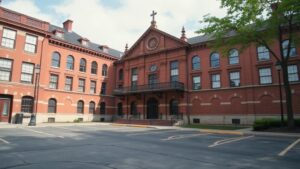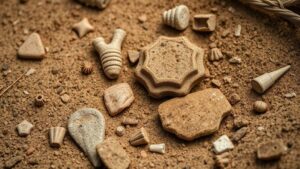Detecting for Hidden Currency Stashes in Abandoned Saloons
Detecting Hidden Currency Stashes in Abandoned Saloons
The allure of abandoned saloons, remnants of a vibrant past in the American Old West, captures the imagination of treasure hunters and historians alike. These establishments often served as hubs of social interaction, entertainment, and commerce, but they also contained the potential for hidden currency stashes that could remain undiscovered. Understanding the methods and strategies for detecting these stashes is essential for both amateur enthusiasts and serious professionals in the field of treasure hunting.
The Historical Context of Saloons
To effectively search for hidden treasures in saloons, it is important to comprehend the historical context in which these establishments operated. During the late 19th and early 20th centuries, saloons were integral to community life, often doubling as general stores, gambling dens, and meeting places. The financial transactions that took place in these saloons could include the exchange of cash, gold coins, and other goods that might have been stored for safekeeping.
Historical records indicate that saloons were often targets for robberies, and in some instances, owners would hastily hide their valuables to protect them from thieves. For example, in 1884, the saloon owner Henry E. Brown in Deadwood, South Dakota, buried approximately $7,000 in gold coins in the back of his establishment when a robbery was imminent.
Identifying Potential Locations
When searching for hidden currency stashes, identifying the right locations is critical. There are several factors to consider:
- Geographic Location: Saloons located in regions with rich mining histories or along historic trading routes are more likely to have hidden treasures.
- Building Layout: Understanding the structural design of the saloon can provide clues. For example, areas such as basements, attics, and behind false walls commonly served as hiding places.
- Historical Accounts: Local legends, newspaper articles, and documentation about past robberies or secretive activities can reveal where stashes may be located.
Tools and Techniques for Detection
Detecting hidden currency stashes requires the right tools and methodologies. Several techniques stand out:
- Metal Detectors: One of the primary tools used by treasure hunters, metal detectors can help locate coins and other metallic items buried within walls or the ground.
- Ground Penetrating Radar (GPR): GPR technology allows for non-intrusive scanning of the ground or building structure, revealing anomalies that could indicate the presence of buried items.
- Excavation Tools: Shovels and digging tools may ultimately be necessary for unearthing hidden stashes once a potential location is identified.
Case Studies of Successful Finds
Real-world examples underscore the viable potential for finding hidden treasures in abandoned saloons. For example, in 2015, a group of amateur treasure hunters uncovered a stash of $5,000 in pre-1893 U.S. silver coins in a decommissioned saloon in Virginia City, Nevada. discovery was made possible through diligent research and the use of metal detection equipment.
In another notable case, a historical preservation team uncovered a hidden compartment behind a false wall in a saloon in Tombstone, Arizona. This discovery led to the recovery of various artifacts, including old currency and gambling tokens, highlighting how even small finds can contribute valuable information to historical records.
Challenges and Considerations
While the prospect of finding hidden currency stashes is enticing, there are challenges to be mindful of:
- Legal Issues: Always verify the legalities regarding treasure hunting in abandoned properties. Different states have varying laws about ownership and digging.
- Safety Concerns: Abandoned buildings may present physical hazards such as unstable structures and hazardous materials.
- Historical Preservation: It is vital to approach searches respectfully, considering the historical significance of the site and working with preservation groups when appropriate.
Conclusion and Actionable Takeaways
Detecting hidden currency stashes in abandoned saloons is a venture steeped in history and adventure. By understanding the context and employing the right tools, enthusiasts can uncover valuable treasures. Consider the following actionable takeaways:
- Conduct thorough research on the saloons history and location before beginning a search.
- Use advanced detection tools like metal detectors and GPR to increase the likelihood of discovery.
- Work within legal boundaries and prioritize safety when exploring abandoned sites.
Ultimately, the pursuit of hidden currency in abandoned saloons not only offers the thrill of treasure hunting but also contributes to the preservation of history when conducted responsibly.

